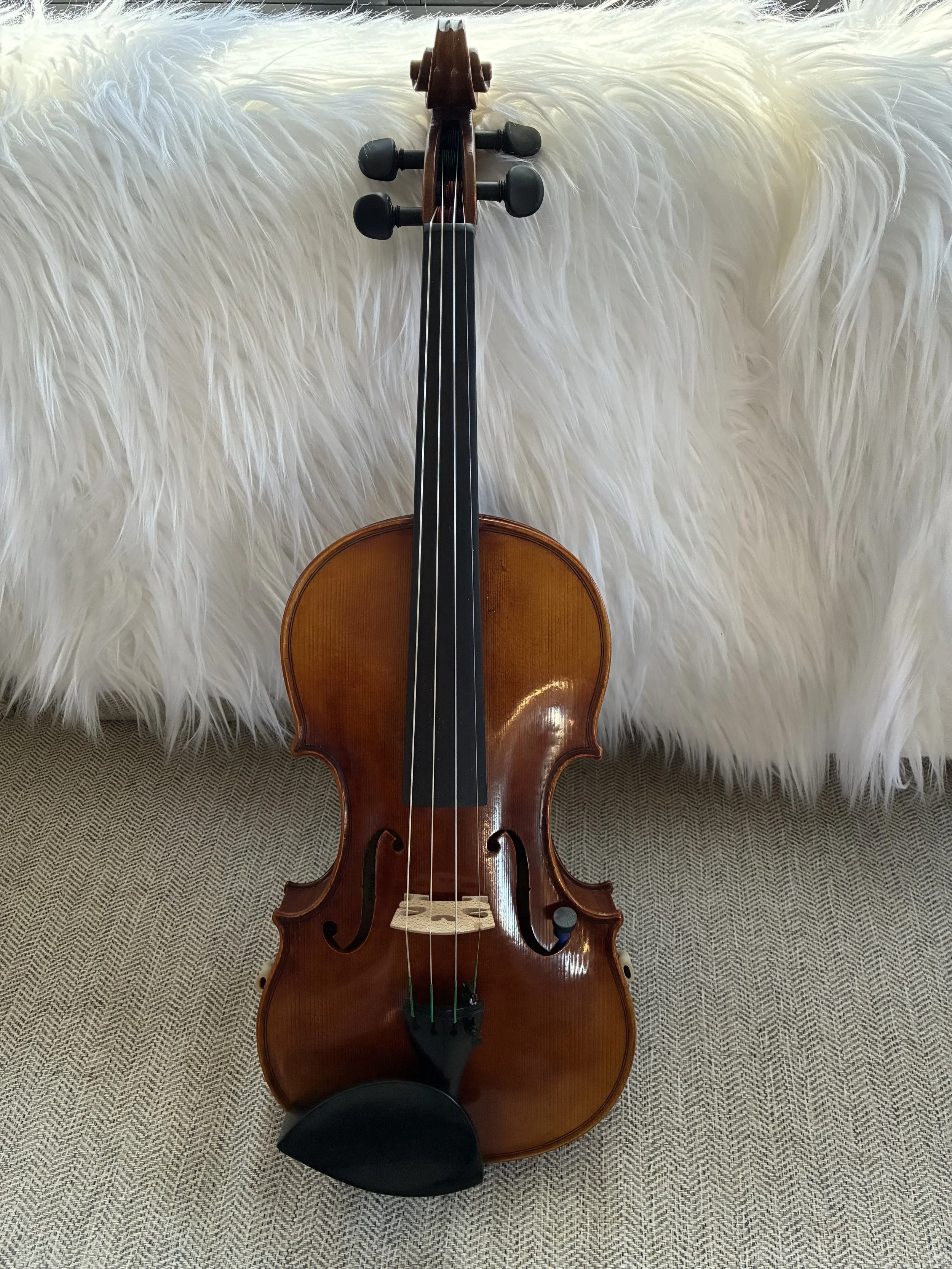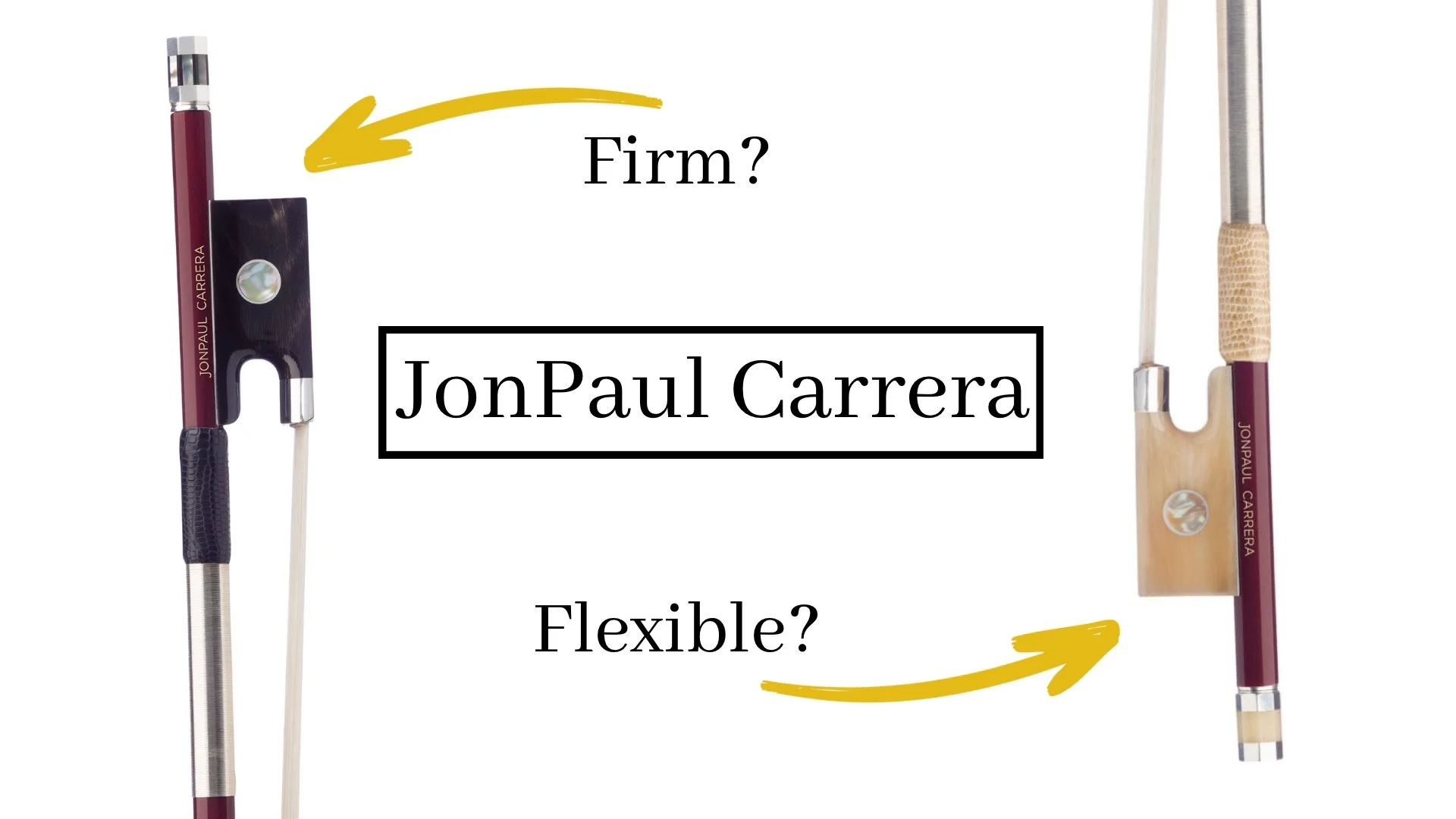Holstein Kreisler Violin Review from Fiddlershop
/I recently purchased a Holstein Kreisler violin from Fiddlershop to use as my main violin. Why you might ask? Well, when I started living in an RV full time, I wanted a good, reliable violin that was more durable (and more replaceable) than my really, really nice violin.
I went through the entire process of looking for a violin online, getting two violins sent to me for an in-home trial, and making a final selection. Here’s my review of the whole process!
Deciding on a Price Point
Anytime you are considering buying or upgrading to a new violin, consider how much you want to spend. From my experience, I knew that $1500-$2000 would get me a good violin adequate for the type of playing I would be doing. But it also wouldn’t be so expensive that I would be terrified of actually using it out on the open road.
Choosing Local vs. Online Retailers
Once you have an idea of how much you want to spend, the next decision is where are you going to go to find a violin in that price range? I always suggest trying local shops or luthiers first if you have the option. For me, living in rural Oklahoma at the time, I knew that my local shops didn’t have a lot of selection in that price range, so I decided to use an online retailer.
If you’re shopping online, go with a reputable dealer that specializes in stringed instruments (not a general music store). There are several options that I often recommend including Shar Music, Southwest Strings, Kennedy Violins, and Fiddlershop to name a few. I was attracted to Fiddlershop for a couple of reasons. They had a wide selection of violins in my price range. I’ve done business with them before and was impressed with their customer service. But namely what drew me to them was the videos they put out on YouTube for customers comparing various violins they offer.
Whatever violin you are looking at, type that in to Youtube and you’ll find lots of comparison videos where you can hear the differences between their violins. This is a game changer when picking a violin online. I spent several weeks with my members listening and comparing lots of different violins. By choosing a violin this way, I was able to eliminate a lot of violins that would’t be a good fit for me and identify the ones I wanted for an in-home trial. I eventually narrowed it down to the Holstein Traditional Soil Stradivarius and the Holstein Traditional Kreisler violin.
The In-Home Trial Process
Most violin shops and online companies will allow you to do an in-home trial in which you are sent violins or bows for a period of time. After that period you can return both, or keep the one you like. You are usually only charged a minimal fee to cover the cost of shipping. So don’t worry, your credit card is not charged for both violins!
You can read the details of Fiddlershop’s in-home trial process here.
The violins I selected do not come with a case or bow since Fiddlershop knows if you are selecting a violin in this price range, you’ll probably want to choose your own case and bow. Although if you call and talk to a representative, they’ll be able to give you some suggestions if you want a case and bow as well.
Since the violins don’t have a case, they were shipped in an impressive cardboard box with a nifty little cover to keep the bridges safe.
And then the actual playing trial began…
Holstein Soil Violin vs. Holstein Kreisler Violin
These two violins were very different. The Soil violin had a warm, intimate sound. When playing it, it felt almost as if the sound were making a little cloud around you. The Kreisler had a more brilliant, focused sound.
I loved both of these violins for different reasons. The Soil was cozy, rich, and subtle, but the Kreisler with its sparkling brilliance reminded me of playing my really, really nice violin Maria (the one I was leaving behind). So I decided to keep the Kreisler violin and after playing it for several months, I’m still in love with this instrument. Here are all the details why…
Holstein Traditional Kreisler Violin Review
The Holstein Kreisler is a Guarneri del Gesù replica, patterned off of a 1730 violin that del Gesù made. The violin was played by many masters but became known as the “Kreisler” after the 20th century master, Fritz Kreisler.
The Kreisler came with Thomastik Vision strings, traditional wooden ebony pegs, one fine tuner (standard for this price range), and your standard Guarneri style chinrest.
As soon as I put the bow to the string, I was struck by the responsiveness of this violin. You get an immediate, clear response. It’s hard to describe what responsiveness feels and sounds like. But imagine asking for a certain sound, dynamic, or accent, and immediately it’s right there. You don’t have to ask twice.
The tone itself was a lovely blend of complexity and brilliance, with a touch of warmth to keep it from being overpowering. When I hear a violin tone I really like, I often describe it as a rose blossoming. (Not your standard store-bought rose, I’m talking home-grown roses.) There are many layers to the sound and you can’t quite put your finger on what exactly makes it so alluring. It’s part of that allure that keeps you playing, the same way you’d marvel at a rose and smell it again and again without every quite getting enough. That’s how I know I have a violin I want to keep.
This is often what you get with more expensive violins, a more complex tonal offering. Some violins may look pretty, and they have a decent tone, but they’re like store-bought roses. The sound might be strong, but it’s one-dimensional.
The Kreisler, like my more expensive Maria, is like a favorite book that you enjoy rereading because you always find something you didn’t pick up on the first time. Even when you know how the book ends, you can marvel at the author’s style and word choice and how they can create a certain atmosphere just with words. A good violin can create that same sense of wonder and awe that keep you wanting to play again and again.
A good violin should sound balanced in the upper range and in the lower range. The Kreisler has a clear, strong tone in either range. Here’s an example of me playing a Salut d’Amour Duet where you can hear the upper ranges of the Kreisler in the first violin part on the left and the lower ranges with the violin two part on the right.
Violin Strings
The Kreisler came with Thomastik Vision strings. I hadn’t played on Vision strings in a while, but I felt these were well suited to the Kreisler. They were new strings, so they did give the violin a slightly intense quality of sound at first. But that mellowed out after a week of playing. When it comes to strings, people often ask how much of a difference this makes when comparing violins. For instance, if Violin “A” has Dominants and Violin “B” has Visions, how can you compare the differences between violins? Strings do make a difference in the sound and can highlight certain qualities or downplay other qualities of the violin. Violin shops are aware of this and usually try to match each violin with the strings that fit it best. So don’t worry too much about what kind of violin strings are on the violins you’re comparing, as long as they are a decent set of strings, you should be fine.
While I did enjoy trying out the Vision strings, after a few months I put on my favorite Evah Pirazzi strings. These strings gave the violin a slightly more broader, warmer sound which I love.
Pegs and Fine Tuners
The first upgrade I made to the Kreisler once I purchased it was to change out the chinrest. But the second upgrade was installing geared pegs.
The Kreisler came with one fine tuner on the E string (standard for this price range) and traditional wooden pegs. If you are new to violins or uncomfortable tuning, this combination can make it tricky to get the violin in tune. Since the strings are new and the violin has been in the mail for a few days, there will be some tuning you’ll have to do at first. Fiddlershop will install geared pegs or more fine tuners on all of the strings before shipping. So if you’re worried about tuning, ask about these two options.
Summary
I’ve been playing on the Kreisler exclusively for the last few months. Overall, I’m extremely pleased with this violin. It delivers everything I need and is enjoyable to play. For the price, it’s a great violin.
If you’re considering a violin from Fiddlershop’s Holstein line of violins, I have a few other recommendations since I spent quite a bit of time comparing every violin in this lineup.
The Kreisler is a great blend of brightness with a touch of warmth. If you want something not quite so bright, I would recommend looking at the Holstein David violin. I haven’t played the David, but I have students who own this violin and love it. If you want more warmth, the Soil Stradivarius is a great violin for someone wanting a warmer tone but some projection too.
The Holstein line of violins all come in three options: Traditional, Workshop, and Bench. Each option goes up in price and quality. For instance, you can get a Traditional Kreisler, a Workshop Kreisler, or a Bench Kreisler. With each level, you’ll find better quality woods and craftsmanship. I went with the Traditional because my goal was not to get the absolute best sounding violin I could find (I already had that!) I wanted something that sounded great at an affordable price, and the Traditional Kreisler fit that bill perfectly. While I have not played a Workshop or Bench version, differences in appearance and sound are apparent when listening to comparison videos online. So if you want an even better sound, research the Workshop Kreisler or the Bench version.
If you’re thinking about buying a new violin, I suggest watching my videos on comparing violins so you can feel confident with the decision you make. Or if you’re interested in checking out the Kreisler, click the link below!
The more you write about how violins sound, the more you want to play them. So I’m off to play my Kreisler. Happy Practicing!
* I was not asked nor paid by Fiddlershop to review this violin. I selected and purchased this violin based on my own needs and projects. If you choose to purchase this violin or other equipment and use the links on this page, I make a small commission at no cost to you. I only endorse products that I use or products I believe bring value to you. If you would like to support Meadowlark Violin Studio, clicking through my links to purchase this equipment helps me in my mission to make learning violin easier for everyone!




















